As an Amazon Associate, I earn from qualifying purchases with no additional costs for you.
While most travelers stop by Mississippi for the southern charm and delicious food, rockhounds visit it for the treasures that reside in the Mississippi River and other waterways. Gain a thorough understanding of the rocks and minerals that reside in the Magnolia State with this article.
When you go rockhounding in the Magnolia State, keep a lookout for these treasures:
- agate,
- petrified wood,
- fossilized shark teeth,
- chert,
- limestone,
- chalcedony,
- fulgurites,
- amber,
- and gold.
Even if you have been to Mississippi a dozen times, the more information you have when rockhounding, the better your chances are of hitting the jackpot. In this guide, we have gathered rockhounding information and locations that will come in handy during your Mississippi adventures.
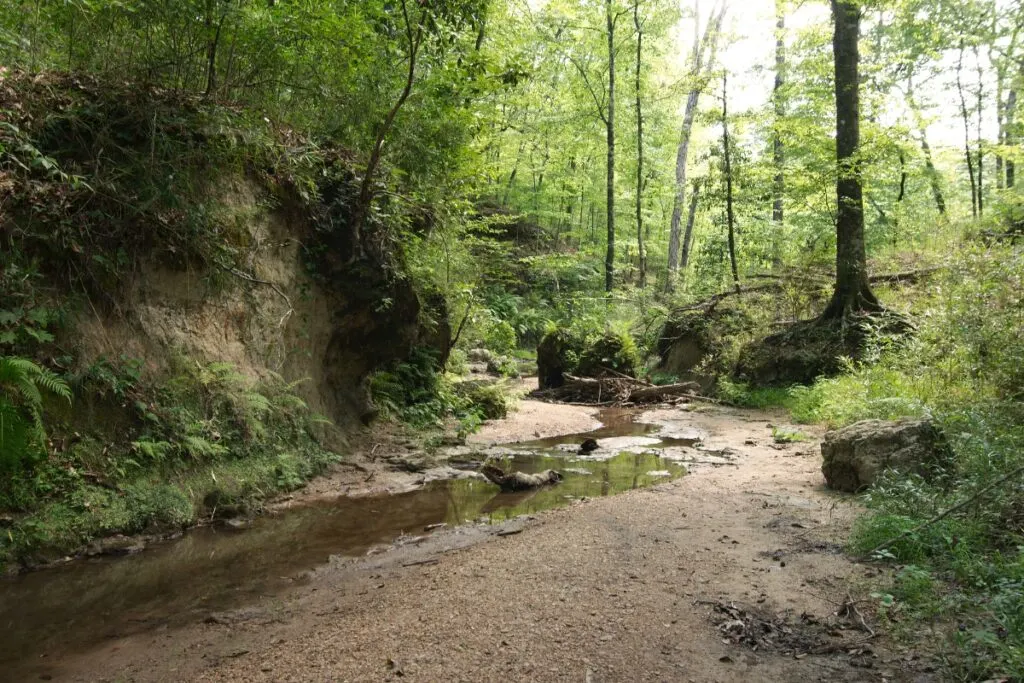
If you are interested in checking out the best rockhounding tools you can find them by clicking here (Amazon link).
What Rocks Are Found in Mississippi
An interesting variety of rocks exist in the Magnolia State, such as:
Agate
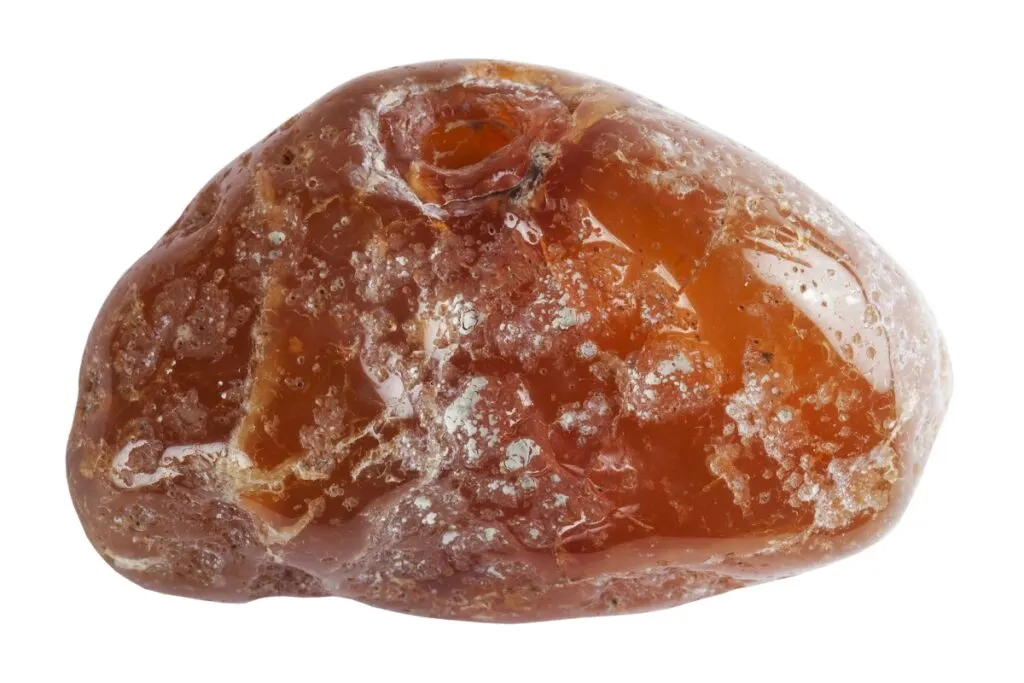
| Location | GPS Coordinates |
|---|---|
| Mississippi River | 33.144292, -89.943334 |
| Wolf River | 30.553505, -89.323106 |
| Wesson | 31.713948, -90.392053 |
| Adams County | 31.503666, -91.501984 |
| Bell Creek | 31.024149, -91.497440 |
| Homochitto River | 31.212965, -91.528431 |
Along the Mississippi River, rockhounds can find all sorts of banded agates with orange, red, pink, brown, black, white, gray, and even green colors.
The agates can appear round or flat, and they are typically smaller in size, ranging from two to three inches in length. Additionally, these rocks are all over the place in Mississippi, so they are usually easy to find and collect.
In addition to the Mississippi River, rockhounds search for agates near the Wolf River, Bell Creek, and the Homochitto River. Wesson and Adams County are also known for their abundance of agates.
Recommendation box: All tools and equipment you need for rockhounding and rock identification* (Amazon links):
1. Estwing Rock Hammer – Light, comfortable, and extremely durable hammer.
2. Estwing Geologist Pick – Classic and the most trusted paleo pick in the world.
3. Finder 12-inch Chisels – Heavy-duty chisels set with hand protection.
4. Mini Handle Shovel – This is a great tool for digging deep in the dirt.
5 Ironclad Utility Work Gloves – Breathable, but they also protect the areas requiring them most.
6. 3M Safety Glasses – Comfortable and efficient goggles for rockhounding.
7. Convoy 8+ UV Light – 365nm UV LED flashlight with a patented glass filter.
8. Wesley’s Jewelers Loupe – High magnification options (30X and 60X) with carrying case.
9. Mohs Hardness Kit – A specially designed kit for rockhounds
*All recommended products are personally tested and regularly used by experts from this website.
Petrified Wood
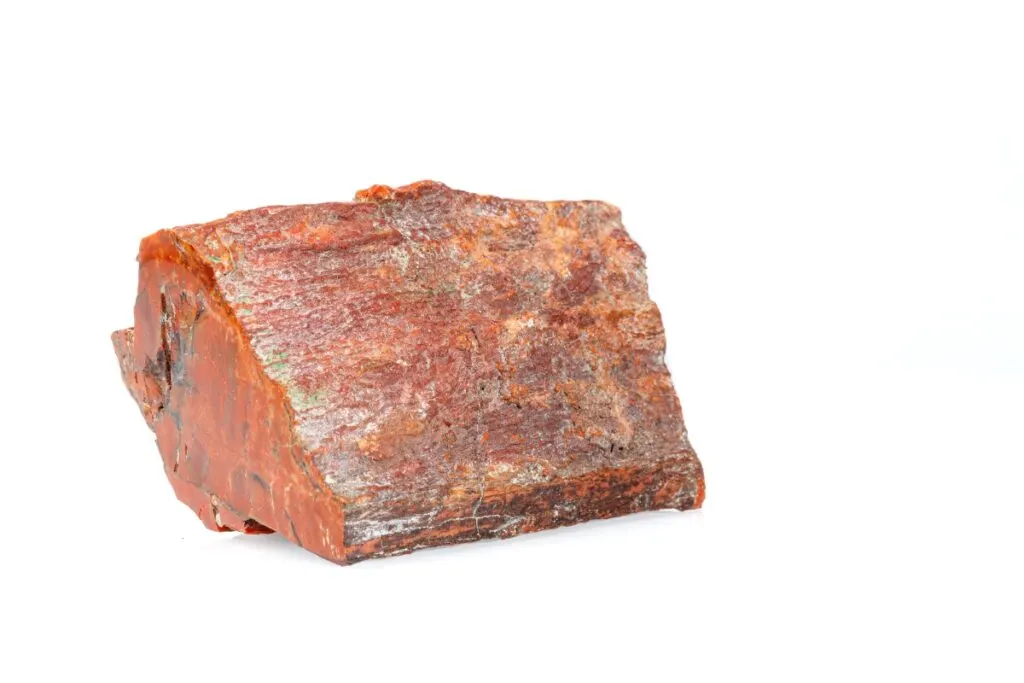
| Location | GPS Coordinates |
|---|---|
| Mississippi Petrified Forest (Gem Fluming) | 32.514136, -90.322993 |
| Holly Springs National Forest (surrounding areas) | 34.726083, -89.085677 |
| Wesson | 31.713948, -90.392053 |
| W.M. Browning Fossil Park | 34.585618, -88.632020 |
| Twentymile Creek | 34.585253, -88.650992 |
| Madison County | 32.535600, -90.277539 |
The state stone of Mississippi is petrified wood, even though petrified wood is technically a fossil. Mississippi has a petrified forest, known as the Mississippi Petrified Forest, and it’s located in Flora.
This forest was created 36 million years ago by a log jam that traveled down rivers to its current location. If you explore the petrified forest, keep in mind that it is not legal to collect petrified wood from this location without permission.
The park does have a “Gem Fluming” area where rockhounds can collect rocks and minerals at specified times. Also, there are plenty of other places in the Magnolia State where rockhounds can collect petrified wood legally without special permissions.
Before collecting petrified wood from a state or private park, be sure to look up the laws or regulations. Some places where rockhounds can pick up fossilized wood in Mississippi are Madison County, Twentymile Creek, and Wesson.
Fossilized shark teeth
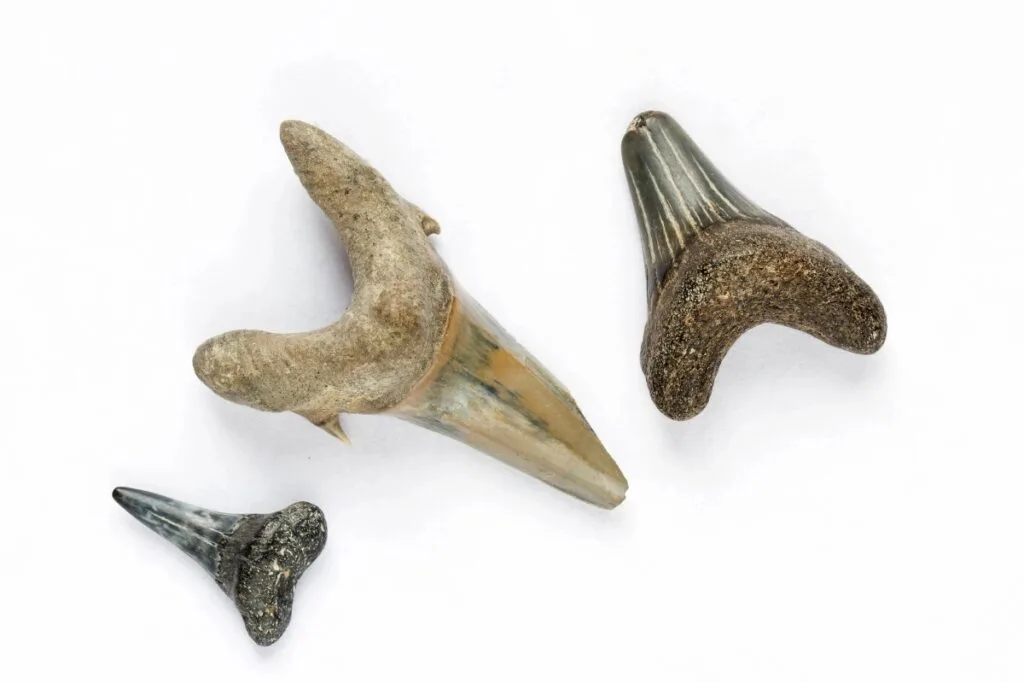
| Location | GPS Coordinates |
|---|---|
| Tombigbee River | 34.408904, -88.419794 |
| W.M. Browning Fossil Park | 34.585618, -88.632020 |
| Warren County | 32.288989, -90.856034 |
| Waynesboro | 31.672272, -88.643996 |
| Mississippi River | 34.816252, -90.441154 |
| Pontotoc County | 34.232655, -89.003898 |
If you’re the type of rockhound who enjoys collecting fossils, Mississippi has plenty to offer. The most popular type of fossil that’s found in the Magnolia State is fossilized shark teeth.
These fossils are scattered all over the place in this state, and they are generally one inch in length. Some rockhounds even find fossilized Megalodon teeth, which are over seven inches in length!
Usually, the fossilized shark teeth rockhounds come across in this state are in great condition, and they range from 20 to 90 million years in age.
Rockhounds uncover fossilized shark teeth all along the Mississippi River and Tombigbee River. Some quality fossils also exist near the W.M. Browning Fossil Park.
TIP: You can’t collect fossils from anywhere, and some U.S. states are more abundant and permissive regarding fossil hunting. Find out more in the article below:
7 Spots Where You Enjoy The Best Fossil Hunting in the USA
Chert
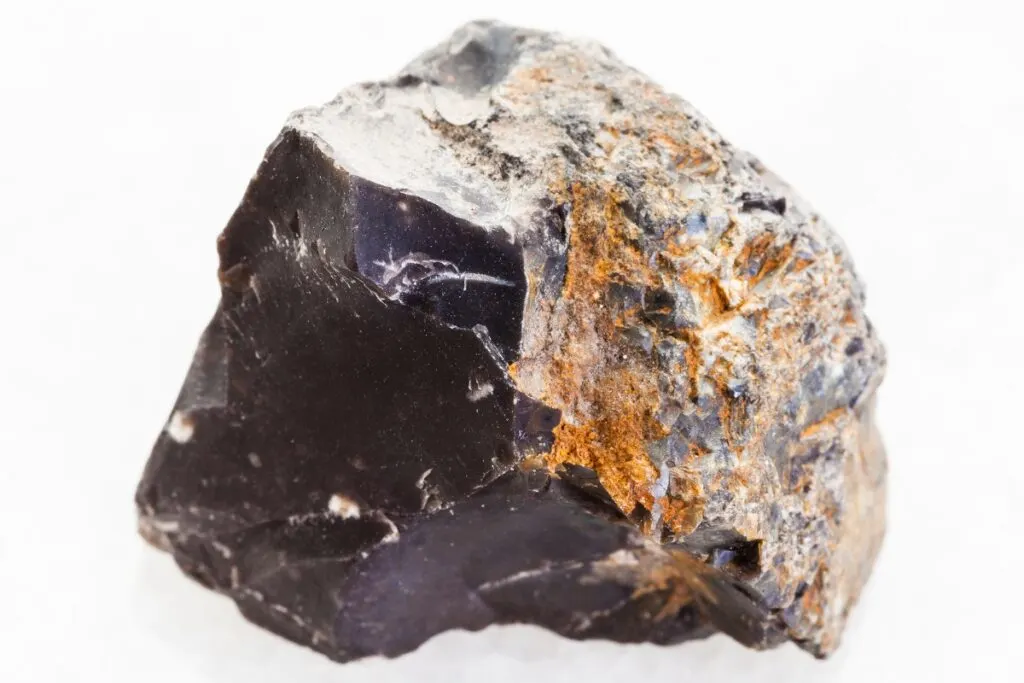
| Location | GPS Coordinates |
|---|---|
| Tishomingo County | 34.647672, -88.223718 |
| Tennessee River | 34.902603, -88.160547 |
| Iuka | 34.821472, -88.198999 |
| Belmont | 34.501805, -88.230585 |
| Dennis | 34.542538, -88.240198 |
| Prentis County | 34.665746, -88.392633 |
Fort Payne Chert is a popular material among rockhounds due to its workability, and you can find it right here in Mississippi. Fort Payne Chert is typically bluish-gray or black in color, but it can appear dark gray or mottled. You can find this chert in abundance in northeastern Mississippi.
Most rockhounds have luck finding chert in northeastern Mississippi, especially near the Alabama/Mississippi border. Check out Prentis County and Tishomingo County for Fort Payne Chert.
Limestone
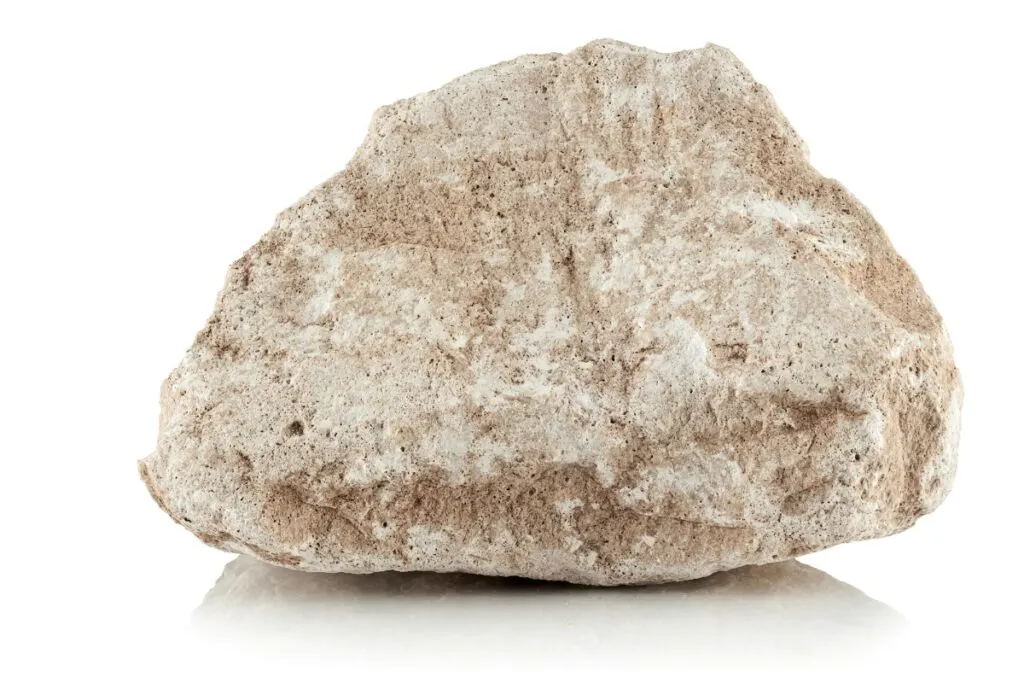
| Location | GPS Coordinates |
|---|---|
| Mississippi River | 34.816252, -90.441154 |
| Tombigbee River | 34.408904, -88.419794 |
| Tishomingo County | 34.647672, -88.223718 |
| Tennessee River | 34.902603, -88.160547 |
| Cave Spring | 34.642724, -88.141498 |
| Clairborne County | 31.973608, -91.135158 |
Limestone is common throughout the southern United States, especially in Mississippi. You can find limestone bluffs all along the Mississippi River, and these limestones contain all kinds of fossils and minerals.
As a matter of fact, Mississippi has some of the richest limestone reserves in the world, so rockhounds have no problem finding this rock in the Magnolia State.
To collect limestone from Mississippi, visit the Mississippi River, the Tombigbee River, or the Tennessee River. Look near the outcroppings and shores of these rivers to find limestone and other rockhounding treasures.
TIP: River rocks are known to everybody because of their abundance and smooth and round form. Find out how river rocks become smooth and round in the article below:
River Rocks: This Makes Them Smooth and Round (How & Where)
What Minerals Are Found in Mississippi
Some minerals that rockhounds collect from Mississippi include:
Chalcedony
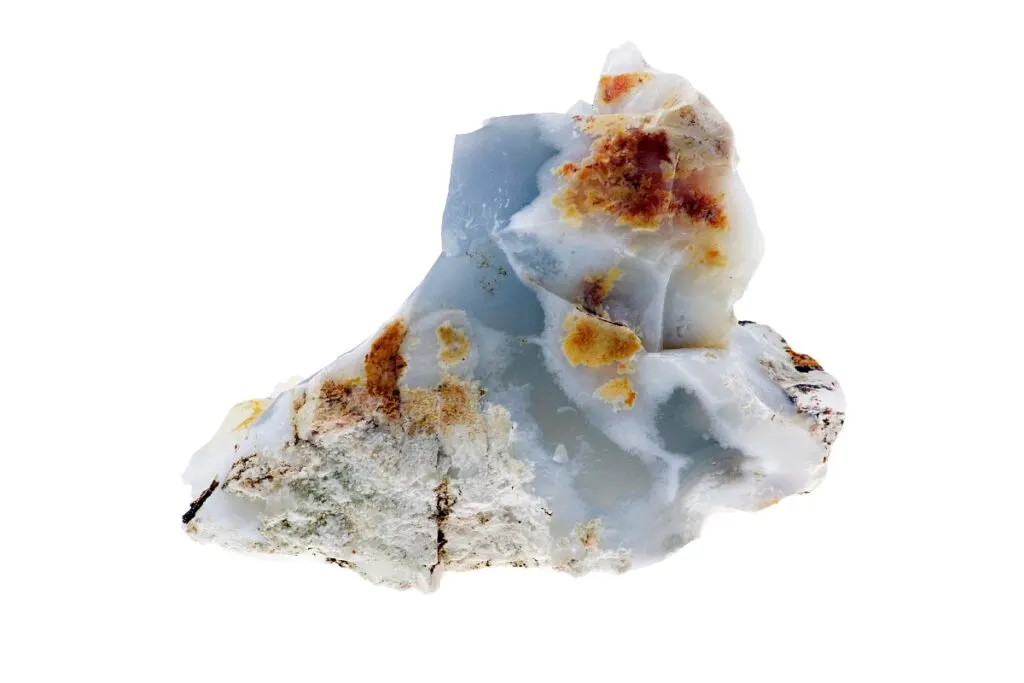
| Location | GPS Coordinates |
|---|---|
| Mississippi River | 34.816252, -90.441154 |
| Wesson | 31.713948, -90.392053 |
| Lincoln County | 31.692288, -90.481008 |
| Copiah County | 31.774767, -90.179303 |
| Pike County | 31.337101, -90.511537 |
| Anderson Road (gravel pits) | 31.715111, -90.331700 |
Mississippi is a great place to find chalcedony and its variants, including blue Chrysoprase and red Heliotrope. Rockhounds even find black onyx in this state. Commonly discovered near the Mississippi River, chalcedony and its variants come in all shapes and sizes in the Magnolia State.
In addition to the Mississippi River, take a look near Wesson and the gravel pits near Anderson Road to add chalcedony to your collection.
BTW: Do you want to know more about rock and mineral identification? The books listed below are the best ones you can find on the internet (Amazon links):
- Smithsonian Handbooks: Rocks & Minerals
- Gemstone & Crystal Properties (Quick Study Home)
- Ultimate Explorer Field Guide: Rocks and Minerals (National Geographic Kids)
Fulgurite
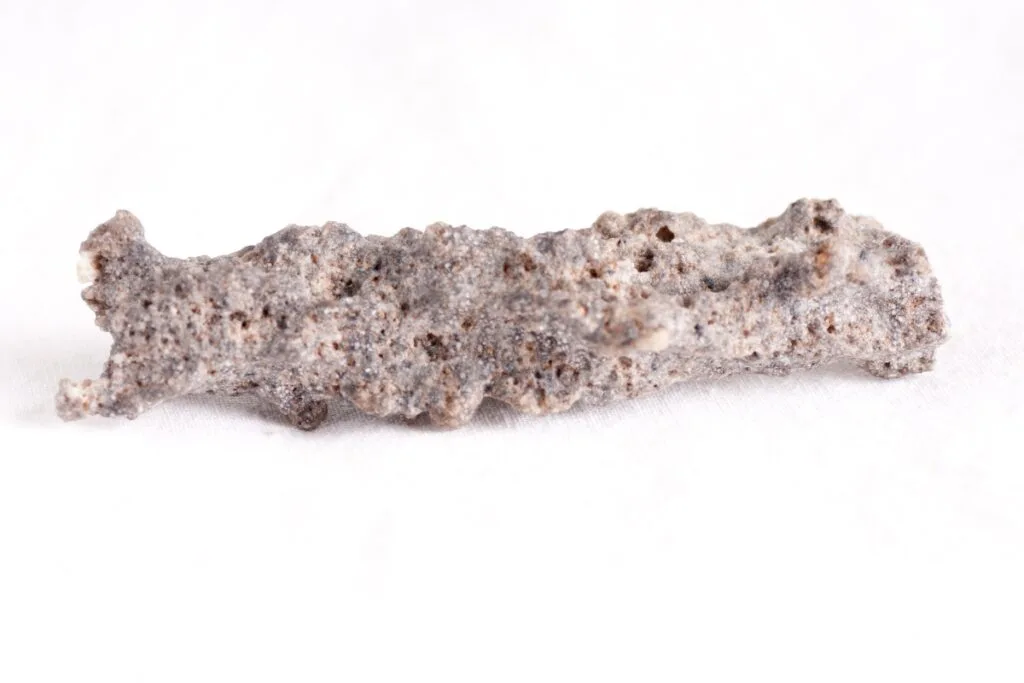
| Location | GPS Coordinates |
|---|---|
| Mississippi River | 34.816252, -90.441154 |
| Tombigbee River | 34.408904, -88.419794 |
| Tennessee River | 34.902603, -88.160547 |
| Little Beaverdam Creek | 31.721491, -90.300453 |
| Pearl River | 32.176647, -90.224720 |
| Steen Creek | 32.107421, -90.217498 |
When lightning strikes sand, it creates a special type of quartz called petrified lightning, or fulgurite. Mississippi fulgurites appear white, black, green, tan, and translucent, depending on the type of sand that was struck.
As you search for fulgurites in the Magnolia State, keep in mind that fulgurites’ outward appearance is jagged and porous, but the inner layers are smooth. Once published, petrified lightning is a unique and fascinating addition to any rockhound’s collection, so be sure to gather some from this state.
Look along sandy riverbanks and lakeshores in Mississippi for petrified lightning. The Mississippi River, Tombigbee River, and Tennessee River are all great rockhounding sites for petrified lightning.
Amber
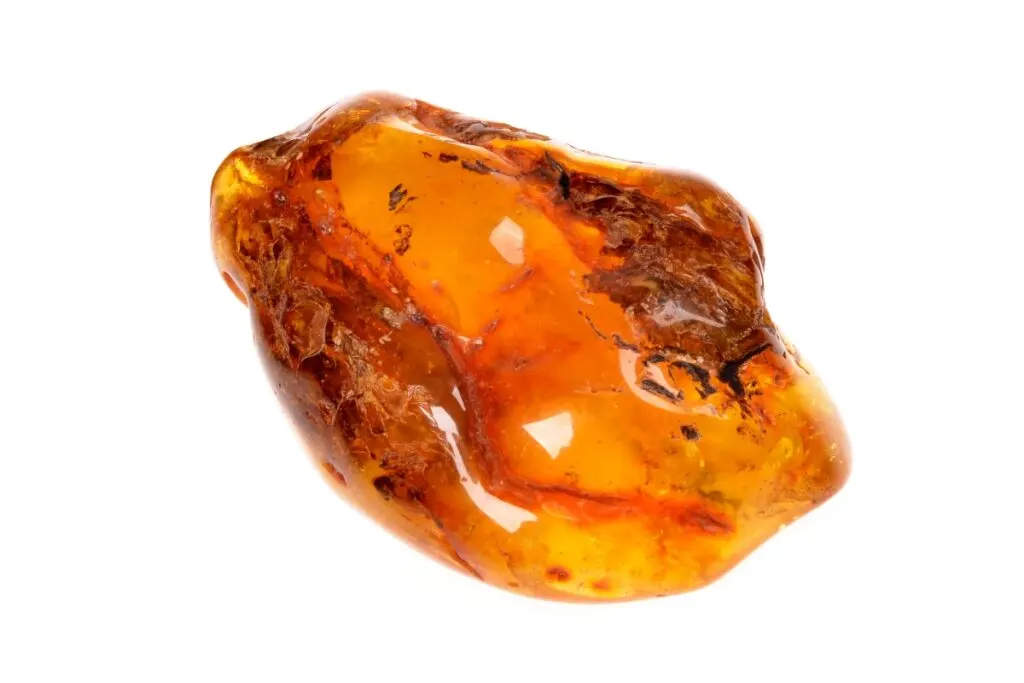
| Location | GPS Coordinates |
|---|---|
| Paden | 34.665652, -88.259537 |
| Tishomingo County | 34.706638, -88.261145 |
| Prentiss County | 34.698707, -88.376912 |
| Itawamba County | 34.397201, -88.281511 |
| Alcorn County | 34.979798, -88.413357 |
Although amber is technically not a mineral, it is a valuable gemstone. You can find different varieties of amber in Mississippi, and some pieces even contain small creatures such as ants and other insects. Paden, an area in Tishomingo County, is an excellent site for collecting multiple varieties of amber.
Paden and the surrounding counties are some of the best areas in Mississippi to collect amber. Tishomingo County, Prentiss County, and Alcorn County should be your first stops for this gemstone.
Gold
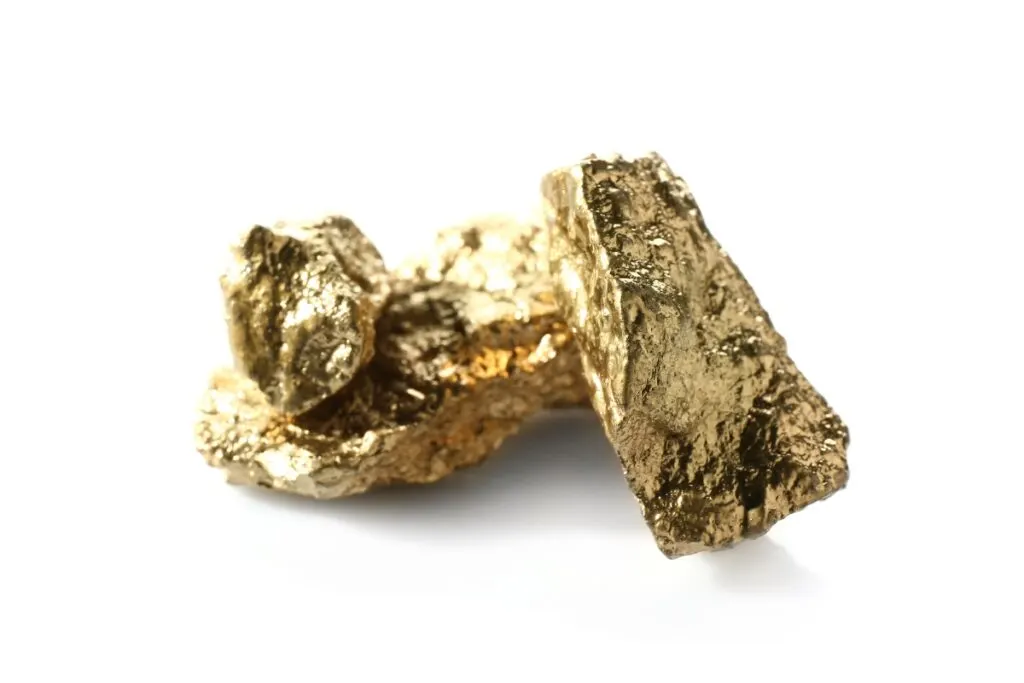
| Location | GPS Coordinates |
|---|---|
| Mississippi River | 34.816252, -90.441154 |
| Gulfport | 30.376230, -89.076604 |
| Pascagoula River | 30.346403, -88.564040 |
| Bay St. Louis | 30.337577, -89.334095 |
| Pearl River | 30.242603, -89.612996 |
| Heron Bay | 30.193135, -89.474650 |
Near the mouth of the Mississippi River, people often find gold. While some of the gold is in its natural form of flakes, it also comes in the form of coins that were once lost at sea. These coins are found along Mississippi’s beaches, but they also exist on the riverbanks that feed out to the sea.
There is gold that exists in Mississippi, and it’s more abundant in some places than others. The Mississippi River, the Pascagoula River, and the Pearl River are all great areas to search, especially near the river mouths.
TIP: Today, metal detectors designed specifically for gold prospecting can pinpoint where gold is lurking underground. Check out the best metal detectors for gold prospecting in the article below:
Metal Detectors for Gold Prospecting: Finding the Right Machine to Strike it Rich
FAQ About Common Rocks & Minerals in Mississippi
Let’s explore the rocks and minerals of Mississippi with the following FAQs:
What Rare Rocks Can You Find in Mississippi
In the Magnolia State, some rare rocks that you can find are agates, jaspers, geodes, and fossils.
Rockhounds come across all kinds of fossils in Mississippi, including fossilized shark teeth, petrified wood, whale fossils, cephalopods, and fish fossils. Petrified wood from Mississippi is especially popular among rockhounds, and there is a petrified forest that exists within the state.
If you want to collect agates, jaspers, or geodes, the Mississippi River is the place to go. For fossils, check out the W.M. Browning Fossil Park and surrounding areas.
What Rare Minerals Can You Find in Mississippi
Mississippi opal, onyx, carnelian, gold, fulgurite, amethyst, and garnet are a few of the rare minerals that rockhounds bring home from Mississippi. Out of all these minerals, the most unique one for this state is the Mississippi Opal.
The Mississippi Opal is Mississippi’s state gemstone, and it’s one of the few precious gems that exist in the area.
This type of opal was created by volcanic ash millions of years ago, which is surprising since Mississippi is not known to contain large amounts of volcanic ash. Mississippi Opals have bright flashes of color that appear red to green in color.
Without a doubt, the best place to go rockhounding for minerals in the Magnolia State is the Mississippi River. Local rockhounds find their best treasures all along the shores and banks of this river.
What is the Most Famous Rock or Mineral Found in Mississippi
Interestingly, Mississippi is best known for its petrified wood. Some amazing specimens have been discovered in this state, especially in areas near the Mississippi Petrified Forest. Most of the Mississippi petrified wood is from the Oligocene period, so it’s approximately 30 million years old.
Even though rockhounds are not allowed to take petrified wood from the Mississippi Petrified Forest, the surrounding areas are great places to search. For more information on where to find petrified wood in the Magnolia State, scroll up to the “petrified wood” section above.
Conclusion
Who knew that you could find opals and fulgurites in Mississippi! Sadly, Mississippi has a reputation for being a poor state for rockhounds; however, it has some very interesting and unique stones that people often overlook.
Petrified lightning, Mississippi Opals, and agates are all top-notch finds for rockhounds, and you can uncover all this and more in the Magnolia State. So, before you cross Mississippi off your rockhounding list, take a look around the state; you’ll be surprised by how many treasures you can find!
TIP: Mississippi has a couple of exciting rockhounding sites to explore. Find out the complete guide on rockhounding in Mississippi in the article below:
Best Rockhounding Sites in Mississippi & What You Can Find
